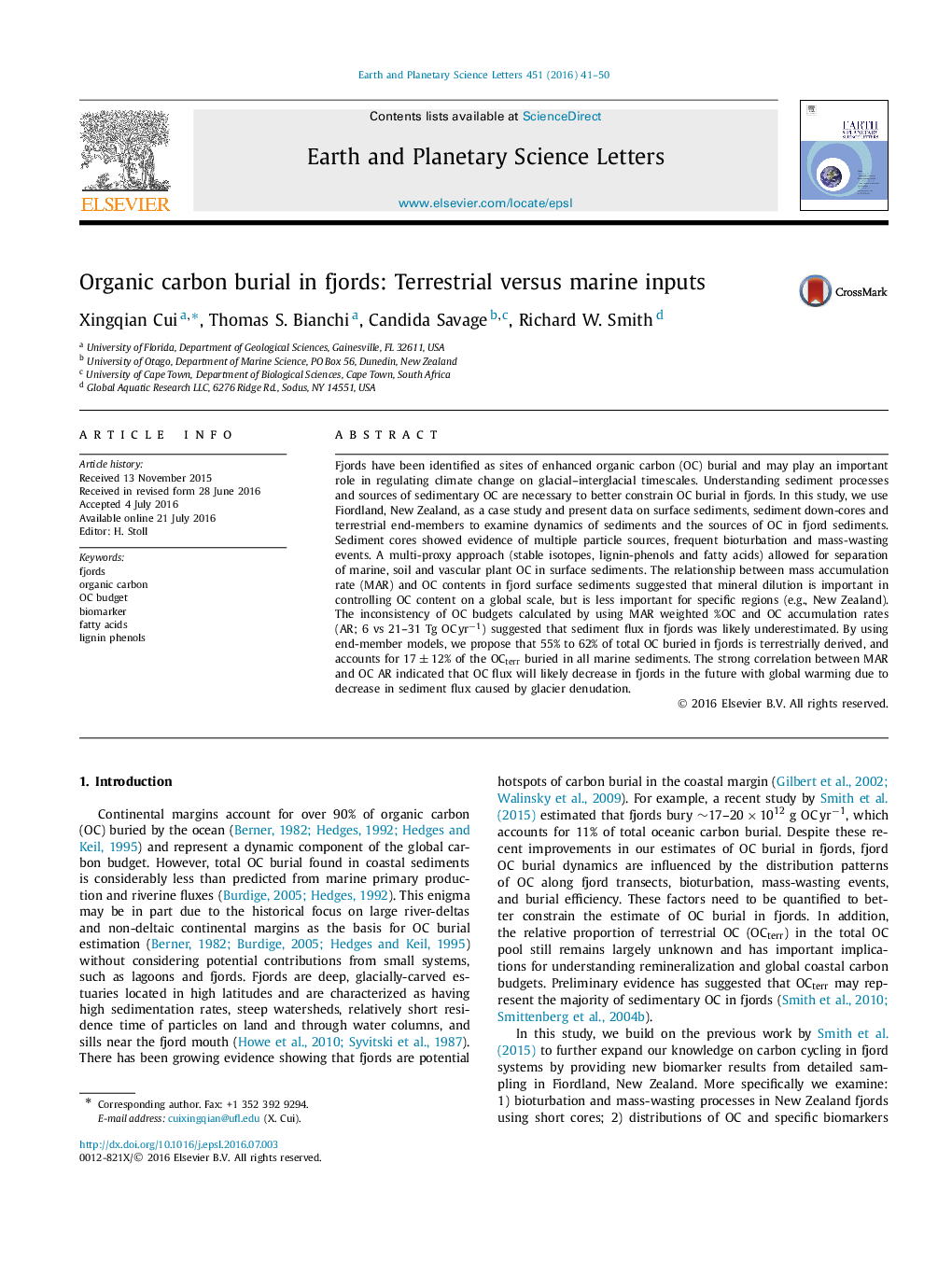| کد مقاله | کد نشریه | سال انتشار | مقاله انگلیسی | نسخه تمام متن |
|---|---|---|---|---|
| 6427246 | 1634705 | 2016 | 10 صفحه PDF | دانلود رایگان |
- Down-core profiles showed evidence of multiple sedimentary processes.
- There are distinct patterns of bulk OC and biomarkers along fjords.
- Mineral dilution is important in influencing OC content in fjord sediments.
- Fjords are a significant geologic sink of terrestrial OC over the century timescale.
Fjords have been identified as sites of enhanced organic carbon (OC) burial and may play an important role in regulating climate change on glacial-interglacial timescales. Understanding sediment processes and sources of sedimentary OC are necessary to better constrain OC burial in fjords. In this study, we use Fiordland, New Zealand, as a case study and present data on surface sediments, sediment down-cores and terrestrial end-members to examine dynamics of sediments and the sources of OC in fjord sediments. Sediment cores showed evidence of multiple particle sources, frequent bioturbation and mass-wasting events. A multi-proxy approach (stable isotopes, lignin-phenols and fatty acids) allowed for separation of marine, soil and vascular plant OC in surface sediments. The relationship between mass accumulation rate (MAR) and OC contents in fjord surface sediments suggested that mineral dilution is important in controlling OC content on a global scale, but is less important for specific regions (e.g., New Zealand). The inconsistency of OC budgets calculated by using MAR weighted %OC and OC accumulation rates (AR; 6 vs 21-31 Tg OCâyrâ1) suggested that sediment flux in fjords was likely underestimated. By using end-member models, we propose that 55% to 62% of total OC buried in fjords is terrestrially derived, and accounts for 17±12% of the OCterr buried in all marine sediments. The strong correlation between MAR and OC AR indicated that OC flux will likely decrease in fjords in the future with global warming due to decrease in sediment flux caused by glacier denudation.
Journal: Earth and Planetary Science Letters - Volume 451, 1 October 2016, Pages 41-50
